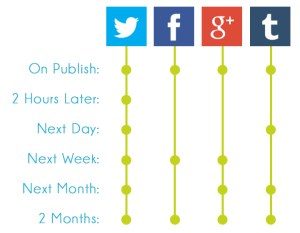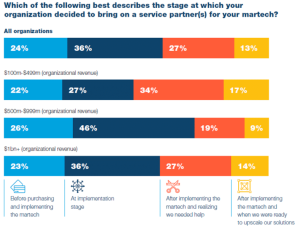If you’re in the job market, you’d be forgiven for thinking this post falls under the, ‘heard it before, going to hear it again’ category.
After all, when it comes to résumés, everyone seems to agree that achievements matter.
And while this holds true across all levels – front-line staff often make or break a customer’s opinion of a brand, for example – I’m interested in talking about why résumé achievements are especially important for senior managers, executives and directors – and how to write ones that grab attention of recruiters.
The closer you are to the top of the corporate hierarchy, the more likely it is that your individual successes are going to impact the success of the business as a whole.
The question becomes: how can you communicate that?
Why are achievements so important for senior professionals?
As much as hiring is about finding the most qualified person for the job, it’s also about mitigating risk.
Bad hires have massive consequences, costing a minimum of USD $ 25,000 to $ 50,000 by some estimates, a number that only increases when you consider the collateral damage of a poorly made decision at the senior level: decreased productivity, a talent exodus, and – with the current Volkswagen scandal – billions of dollars in fines, fix-it costs, and lost shareholder value.
Recruiters and hiring managers mitigate risk in a variety of ways, but number one on their list is looking for people who’ve been there, done that: show me a senior leader who can demonstrate they’ve consistently achieved on past mandates, and I’ll show you someone who won’t be on the market for long.
Is there a right way to write achievements?
I’d love to be kind and say there’s no wrong way to write a résumé achievement, but that’s a big fat lie.
If I’m honest, I’d go so far as to say the vast majority of people get it wrong, a mistake that not only costs them, but actually compounds over the long haul in terms of career progression, salary increases and reputation.
So what is the wrong way to write a résumé achievement? Consider this achievement for a Vice President, Sales of a consumer goods brand:
Achieved 110% to annual sales target in 2014.
Ummm….okay. Does the way that’s written knock your socks off? Does it make you say, “hold the phone, I think I’ve found our new Head of Sales?” Knock on your boss’s door to call off the search?
It sure doesn’t do that for me.
Here’s what I’m thinking: Who cares? Wasn’t 2014 a good year for consumer spending anyway? How did their biggest competitor fare that year? How did the sales team perform the year before, or under the previous VP?
In other words, the way this achievement is written — the way most people write résumé achievements — actually brings up more questions than it answers.
How should you write achievements?
Now that I’ve shared how NOT to write résumé achievements, let’s go over how my team does it when we’re craft résumés for senior professionals.
While there’s no set formula that works across all situations, we typically draw upon the following three methods: ARTA, COSR and STAR.
Method 1: Achieved Result By Taking Action (ARTA).
This is my go-to for a simple achievement across all levels. Taking the above example, and rewriting it to have more impact using the ARTA method, we get:
Delivered 110% to 2014 sales target (achieved result) by developing a new-to-company strategy to target the underdeveloped Gen Y market (by taking action).
While I certainly didn’t answer all the questions my ‘recruiter self’ asked above, I’ve provided more information in an authoritative tone, giving some context and demonstrating a broad understanding of the market.
Method 2: Challenges, Obstacles, Steps and Results (COSR).
While the ARTA is good for straightforward achievements, at the manager, executive and board level, it’s often necessary to communicate more complex ideas and achievements.
Let’s consider the same achievement again, this time using the Challenges, Obstacles, Steps and Results (COSR) method:
Addressed a decade-long trend of declining sales performance (challenge) and overcame reduced spending by Gen X and Boomer consumers (obstacle) by embedding a new-to-company Gen Y strategy (steps), achieving 110% to 2014 annual sales target within the first year (results).
See how much better that is?
Method 3: Situation Task, Action, Result (STAR).
Finally, we have the STAR method.
Most professionals are familiar with this method, especially those who’ve applied for a role in the public sector. While STAR answers are typically longer than the average résumé bullet, the same ideas can work in a single-sentence format.
Let’s consider the same achievement one more time, this time outlining the situation, task, action and result.
Addressed downward overall spending trends (situation) and met sales turnaround and growth goals (task) by identifying and targeting opportunities within the lucrative Gen Y market (action), achieving 110% to 2014 sales plan (result).
How do achievements differ by level of seniority?
When it comes to perfecting an executive résumé, the way you write your achievements is only half the battle.
You also need to consider level appropriateness, and ask yourself whether you’re communicating the scope, seniority and commercial acumen a recruiter would expect of a senior manager, executive, or board director.
So what does that mean in practice? Take a look at my fictitious, level-by-level résumé achievements below, broken down by function or industry so you can see how they might change.
- Résumé Achievements for Senior Managers
At this level, recruiters want to see achievements that show you can deliver operational pieces that feed into the strategic priorities of the business, and that you can operate with one foot in strategy, and one in the day-to-day.
Achievements should demonstrate your understanding of the strategic drivers of the industry and market, and that you’re able to make tangible contributions to achieving the strategic plan.
Take a look at these examples:
Finance: Delivered $ 3m in operational cost savings and improved commercial decision support by consolidating regional accounting teams within the Sydney head office, influencing the Leadership Team to redirect savings into a future-proofing system upgrade.
Product & Marketing: Played a leadership role in attaining first-in-market status by conceptualising and leading a tween-focused community outreach strategy, capturing 3.5% market share from the largest competitor and establishing brand loyalty among a key demographic.
Capital Projects: Protected project outcomes of the XYZ building expansion as a late-addition Project Manager, renegotiating truncated timelines and right-sizing spending to deliver a 20% over budget, 6-month over schedule project to original cost targets only 6 weeks after the original deadline.
Supply Chain: Delivered $ 2m in annual cost savings, shortened average delivery timelines by 30%, and boosted customer satisfaction by 4% by conceptualising and leading an end-to-end shift from one drop-ship supplier to another, managing the transition with minimal disruption to customers.
Publishing: Boosted monthly advertising revenues by 6% by dedicating up to one page of the bi-weekly Arts & Lifestyle section to advertorial content, engaging a freelancer to produce content to maintain low overhead and maximise profits.
- Résumé Achievements for Executives
At the executive level –anywhere from the General Manager or Vice President level into the C-suite, recruiters want to see you’ve shifted focus away from day-to-day operations.
Achievements should focus on leadership competencies, particularly those related to people and culture, business direction, strategy and roadmaps, and commercial performance.
Take a look at how I’ve elevated the previous achievements from the senior manager level, while still working within the same function or industry:
Finance: Transitioned the company from a net loss to a gain position and addressed overspending, inefficiencies, and a lack of robust controls by leading company-wide policy shifts, upskilling divisional leaders, and transforming the culture from one of unchecked spending to one of fiscal restraint.
Product & Marketing: Boosted market share by 3% to 7% within the growth-critical East Asian markets by replacing the failing one-size-fits-all strategy to one valuing cultural and consumption differences, creating a new team of local experts to lead on-the-ground localisation efforts.
Capital Projects: Played a critical role in achieving exponential growth targets by developing and leading a 5-year Capital Projects & Modernisation strategy, creating room to grow and shoring up foundational systems and facilities to be best-in-market.
Supply Chain: Reduced overhead by as much as 60% and enabled a more flexible and responsive business model by spearheading the transition from self-storage product warehousing and shipping to a drop-shipping model.
Media Publishing: Diversified revenue and drove 8% top line growth by leading the end-to-end acquisition of 2 regional online properties, allowing the business to further penetrate the lucrative Arts & Lifestyle market.
Board Member
Finally, let’s take a look at the type of high-level strategy and governance achievements recruiters want to see with Board of Directors roles.
Finance: Protected shareholder value and mitigated risk by modernising the company’s financial governance structure, Chairing the first Finance Committee to make broad-based change since before the 2008 GFC.
Product & Marketing: Positioned the business for future competitiveness by supporting the CEO strategy to shift from white label remarketing to in-house product development, leading a BOD working group to assess viability and influencing fellow board members to vote in favour of the strategic shift.
Capital Projects: Secured the festival’s financial future by raising $ 75m in capital project funding across 3 years, engaging an external specialist, establishing the tiered system patronage strategy, and leveraging professional relationships to secure 10 patrons for 20 years each.
Supply Chain: Removed barriers hindering significant cost savings by convening a working group to assess supply chain efficiency, engaging experts, presenting findings to the Board, and championing a successful amendment to the business charter.
Media Publishing: Ensured continued competitiveness despite declining industry revenues by partnering with the CEO, CFO and the 4-member Corporate Development Committee to shape and secure approval for a 5-year revenue diversification strategy.
Key point to remember.
When it comes to the role achievements play on a senior professional’s résumé, I like to think of it like this: if recruiters are gatekeepers, achievements are both the key to unlock the gate, and a foot wedged ever so slightly in the door, to prevent it from slamming shut.
While the achievements alone aren’t going to land you a job, carefully written and level-appropriate achievements can help you find your way to the top of the pile of résumés.
By the way, to increase your chances of success, ensure that your résumé has no grammatical mistakes that make you look dumb.
Business & Finance Articles on Business 2 Community(219)





